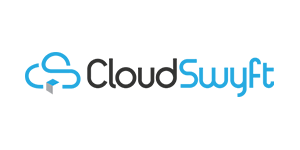Microsoft Future Ready: Data Query with Transact-SQL (T-SQL)
Posted 4 years 3 months ago by CloudSwyft Global Systems, Inc.
Transact-SQL is an essential skill for data professionals and developers working with SQL databases. This self-paced course uses a combination of expert instruction, demonstrations, and practical labs, to support you through your first SELECT statement to implement a transactional programmatic logic.
Build confidence using Transact-SQL (T-SQL)
You’ll work through multiple modules, each of which explore a key area of the Transact-SQL language, with a focus on querying and modifying data in Microsoft SQL Server or Azure SQL Database. The labs in this course use a sample database that can be deployed easily in Azure SQL Database, so you get hands-on experience with Transact-SQL without installing or configuring a database server.
Combine SQL database skills with knowledge of Microsoft Azure
You’ll explore key areas of using SQL, with a focus on querying and modifying data in Microsoft SQL Server or Azure SQL Database. The practical side of this course focuses on working with data types and NULL, querying multiple tables with JOIN, using set operators, functions, and aggregating data. You’ll also program using Transact-SQL, as well as implementing error handling.
Building on the previous courses within this ExpertTrack, this course will build your practical knowledge of Microsoft Azure and improve your understanding of how to use SQL within it.
This ExpertTrack is designed for aspiring database professionals, application developers and anyone preparing for SQL Server certification exams.
This ExpertTrack is designed for aspiring database professionals, application developers and anyone preparing for SQL Server certification exams.
- Create Transact-SQL SELECT queries
- Work with data types and NULL
- Query multiple tables with JOIN
- Explore set operators
- Use functions and aggregate data
CloudSwyft Global Systems, Inc. - Latest Courses
Data Visualisation Fundamentals for Absolute Beginners
- 2 weeks
- Online
Essential Mathematics for Data Analysis in Microsoft Excel
- 3 weeks
- Online
Introduction to Data Analysis using Excel for Absolute Beginners
- 3 weeks
- Online
How to Use Microsoft Excel for Data Analysis
- 2 weeks
- Online
Microsoft Excel: Advanced Data Analysis and Visualisation
- 3 weeks
- Online


